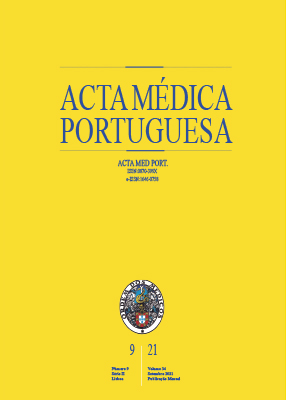Epidemiological Profile in Portugal of Breast Implant-Associated Anaplastic Large Cell Lymphoma: A Cross-Sectional Study
DOI:
https://doi.org/10.20344/amp.14055Keywords:
Breast Implants/adverse effects, Lymphoma, Large-Cell, Anaplastic/epidemiology, Anaplastic/etiology, PortugalAbstract
Introduction: Breast implant-associated anaplastic large cell lymphoma (BIA-ALCL) is a rare T-cell neoplasm that is predominantly associated with the use of textured implants. Recently, several countries have tried to clarify their epidemiological profile of BIA-ALCL. This study aims to estimate the number of cases of BIA-ALCL in Portugal and to describe the pattern of use of breast implants at a national level.
Material and Methods: This is a cross-sectional study including 57 healthcare institutions - 29 public hospitals and 28 private institutions. Each department of Plastic, Reconstructive and Aesthetic Surgery was asked to provide information concerning the main manufacturer(s) and respective device texture of the breast implants used, and to report the number of registered cases of BIA-ALCL.
Results: In our study sample, the response rate was 58%. In our sample, most hospitals reported using textured breast implants from Mentor (45.45%), Allergan (42.42%) and Polytech (39.39%). Only one private institution referred using smooth-coated implants from Mentor and Motiva. Despite several hospitals reporting late-onset seromas, there was only one confirmed case of BIA-ALCL after proper investigation with immunohistochemistry and histological procedures.
Discussion: BIA-ALCL may represent a shift for surgeons regarding selection of implant type. Smooth-coated implants or autologous tissue represent adequate alternatives that could surpass the risks associated with textured devices.
Conclusion: In the future, the creation of a national patient registry and proper recognition of BIA-ALCL by plastic surgeons could be useful tools to clarify the impact of the disease nationally and to mitigate potential risk factors.
Downloads
Downloads
Published
How to Cite
Issue
Section
License
All the articles published in the AMP are open access and comply with the requirements of funding agencies or academic institutions. The AMP is governed by the terms of the Creative Commons ‘Attribution – Non-Commercial Use - (CC-BY-NC)’ license, regarding the use by third parties.
It is the author’s responsibility to obtain approval for the reproduction of figures, tables, etc. from other publications.
Upon acceptance of an article for publication, the authors will be asked to complete the ICMJE “Copyright Liability and Copyright Sharing Statement “(http://www.actamedicaportuguesa.com/info/AMP-NormasPublicacao.pdf) and the “Declaration of Potential Conflicts of Interest” (http:// www.icmje.org/conflicts-of-interest). An e-mail will be sent to the corresponding author to acknowledge receipt of the manuscript.
After publication, the authors are authorised to make their articles available in repositories of their institutions of origin, as long as they always mention where they were published and according to the Creative Commons license.









